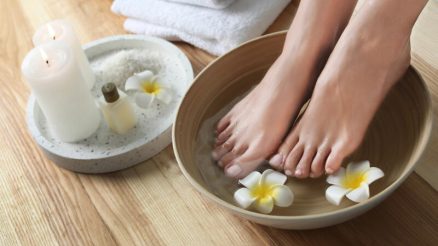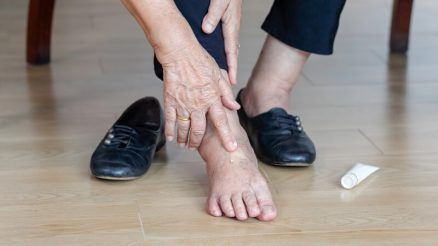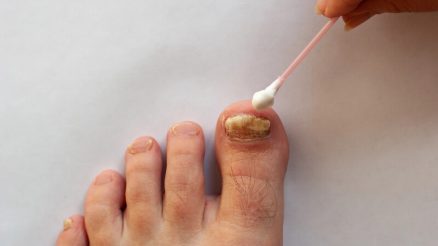Good blood circulation is vital for overall health, especially for your legs and feet, which are often furthest from your heart. When circulation is poor, you might experience symptoms like numbness, tingling, coldness, swelling, or even pain. Over time, inadequate blood flow can lead to more serious health complications such as varicose veins, deep vein thrombosis (DVT), and even peripheral artery disease (PAD).
The good news is that many simple lifestyle changes and habits can significantly improve blood flow to your lower extremities. By understanding how your circulatory system works and implementing these strategies, you can proactively support your vascular health. Here are 10 effective ways to increase blood circulation in your legs and feet:
1. Get Moving with Regular Exercise
Regular physical activity is arguably the most powerful tool for enhancing blood circulation. When you exercise, your heart rate increases, causing your heart to pump blood more forcefully and efficiently throughout your body. This not only strengthens your cardiovascular system but also helps to dilate blood vessels, allowing for greater blood flow. The muscle contractions in your legs, especially the calf muscles, act as a “second heart,” pushing blood back up towards your heart against gravity.
- Walking: A fantastic, accessible starting point. Aim for at least 30 minutes of brisk walking most days of the week. This rhythmic motion engages your calf muscles, which are crucial for venous return.
- Cycling: Whether on a stationary bike or outdoors, cycling is a low-impact exercise that provides an excellent cardiovascular workout, promoting strong blood flow to the legs without excessive joint strain.
- Swimming: An ideal full-body exercise that’s gentle on joints. The hydrostatic pressure of the water can also aid in reducing swelling and improving venous return in the legs.
- Leg-Specific Exercises: Incorporate targeted movements like calf raises (standing on your toes and lowering your heels), ankle rotations (drawing circles with your feet), and toe wiggles throughout the day, especially if you have a sedentary job. These small movements can significantly stimulate blood flow in your lower limbs.
2. Stay Well-Hydrated
Water constitutes a significant portion of your blood plasma, the liquid component of blood. Proper hydration is critical for maintaining optimal blood volume and viscosity (thickness). When you’re dehydrated, your blood can become thicker and more concentrated, making it harder for your heart to pump it efficiently through your vessels. This can lead to reduced blood flow and increased strain on your cardiovascular system.
- Aim for 8-10 glasses of water daily: This is a general guideline; your individual needs may vary based on activity level, climate, and overall health. Listen to your body and drink water consistently throughout the day.
- Limit sugary drinks and excessive caffeine: While not directly dehydrating in moderate amounts, these beverages can contribute to fluid loss or offer empty calories, making it harder to meet your hydration goals with beneficial fluids. Prioritize plain water.
3. Elevate Your Legs
Gravity can be a significant impediment to blood returning from your lower extremities to your heart, especially if you spend extended periods standing or sitting. Elevating your legs helps gravity work with you, assisting the venous system in draining accumulated blood and fluid back towards the central circulation. This reduces pooling in the legs and feet, thereby decreasing swelling and improving overall circulation.
- How to do it: Lie down and prop your feet up above the level of your heart. You can use several pillows, a wedge cushion, or a recliner. Aim for 15-20 minutes at a time, several times a day.
- When to do it: This is particularly beneficial after a long day of standing or sitting, or if you notice any signs of swelling (edema) in your ankles or feet. It can also be a proactive measure to prevent swelling.
4. Consider Compression Stockings
Compression stockings are specialized garments designed to apply graduated pressure to your legs. This means the pressure is strongest at the ankle and gradually decreases up the leg. This external pressure helps to gently squeeze the leg tissues and blood vessels, assisting the one-way valves in your veins to push blood back up towards your heart more effectively. They are particularly beneficial for individuals with venous insufficiency, varicose veins, or those who experience leg swelling due to prolonged standing or sitting.
- Consult a doctor: It is highly recommended to consult a healthcare professional before using compression stockings. They can help determine the appropriate compression level (e.g., light, moderate, firm) and ensure a proper fit, which is crucial for effectiveness and comfort.
- Types: Compression stockings come in various lengths (knee-high, thigh-high, waist-high) and materials, catering to different needs and preferences.
5. Incorporate Regular Massage
Massage can be a wonderful way to stimulate blood flow in your legs and feet. The physical manipulation of tissues helps to encourage the movement of blood through congested areas and can also promote lymphatic drainage, reducing fluid buildup. Beyond direct circulatory benefits, massage helps relax muscles and reduce tension, which can indirectly improve blood flow by alleviating constricted areas.
- Self-massage: Use your hands to gently but firmly knead, stroke, and rub your calves, ankles, and feet. Work in upward motions towards your heart. You can use a lotion or oil to reduce friction.
- Professional massage: A professional massage therapist can provide deeper tissue work and address specific areas of concern, further enhancing circulation and relaxation.
- Tools: Simple tools like foam rollers, massage balls, or even a rolling pin can be effective for self-massage, allowing you to apply pressure to larger muscle groups.
6. Enjoy Warm Baths or Foot Soaks
Applying warmth to your legs and feet can have a direct vasodilatory effect, meaning it causes your blood vessels to widen or dilate. This widening allows more blood to flow through the vessels, improving circulation. A warm bath or a dedicated foot soak can be a deeply soothing and effective way to achieve this, especially after a long day.
- Temperature: Ensure the water is comfortably warm, not scalding hot, to avoid burns or over-dilation which could lead to lightheadedness.
- Additives: Adding Epsom salts (magnesium sulfate) to your bath or foot soak can further enhance relaxation and may help reduce muscle soreness and swelling, indirectly supporting better circulation. Essential oils like lavender or peppermint can also add to the relaxing experience.
7. Adopt a Circulation-Friendly Diet
Your diet plays a fundamental role in the health and function of your circulatory system. Eating a balanced diet rich in certain nutrients can support healthy blood vessels, reduce inflammation, and prevent conditions that impede blood flow. Conversely, a diet high in processed foods, unhealthy fats, and excessive salt can contribute to arterial plaque buildup and hypertension.
- Nitrate-rich foods: Foods like beets, leafy greens (spinach, kale, arugula), and celery are rich in nitrates, which your body converts into nitric oxide. Nitric oxide is a powerful vasodilator that helps relax and widen blood vessels, promoting better blood flow.
- Omega-3 fatty acids: Found abundantly in fatty fish (salmon, mackerel, sardines), flaxseeds, and walnuts, omega-3s are renowned for their anti-inflammatory properties. They help keep blood vessels flexible and reduce the risk of plaque formation.
- Antioxidants: Berries, citrus fruits, dark chocolate (in moderation), and colorful vegetables are packed with antioxidants. These compounds protect your blood vessels from oxidative damage, maintaining their integrity and function.
- Limit: Minimize your intake of processed foods, excessive sodium (which can contribute to high blood pressure), saturated and trans fats (which can raise cholesterol and lead to arterial plaque), and refined sugars.
8. Quit Smoking
Smoking is one of the most destructive habits for your cardiovascular system. Nicotine, a primary component of tobacco, is a vasoconstrictor, meaning it causes blood vessels to narrow. Over time, the numerous toxic chemicals in tobacco smoke damage the inner lining of blood vessel walls (endothelium). This damage promotes inflammation, plaque buildup (atherosclerosis), and hardening of the arteries, severely restricting blood flow to all parts of the body, especially the extremities.
- Seek support: Quitting smoking is challenging but incredibly rewarding for your health. There are numerous resources available, including nicotine replacement therapies, medications, counseling, and support groups, to help you on your journey.
9. Manage Underlying Health Conditions
Several chronic health conditions can directly impair blood circulation. Effectively managing these conditions is paramount to improving and maintaining healthy blood flow. Regular medical check-ups and adherence to your doctor’s recommendations are crucial.
- Diabetes: Persistently high blood sugar levels can damage small and large blood vessels throughout the body, leading to diabetic neuropathy and peripheral artery disease. Strict blood sugar control is vital.
- High Blood Pressure (Hypertension): Uncontrolled high blood pressure puts excessive strain on your arterial walls, making them stiff and less elastic over time. This reduces their ability to dilate and constrict effectively, hindering blood flow.
- High Cholesterol: Elevated levels of LDL (“bad”) cholesterol contribute to the buildup of fatty plaques in your arteries (atherosclerosis), narrowing them and impeding blood flow.
- Regular check-ups: Work closely with your doctor to monitor and manage these conditions through appropriate medication, dietary modifications, and lifestyle changes.
10. Avoid Prolonged Sitting or Standing
Maintaining any single position for extended periods, whether sitting at a desk or standing for hours, can significantly impede blood flow in your legs. When you’re immobile, your leg muscles are inactive, and the natural pumping action that aids venous return is diminished. This can lead to blood pooling in your lower extremities.
- Take breaks: If you have a desk job, make it a habit to get up and walk around for at least 5-10 minutes every hour. Even standing up and stretching can make a difference.
- Stretch: Incorporate simple stretches for your legs, ankles, and feet throughout the day. Ankle pumps (flexing your foot up and down) are particularly effective for stimulating calf muscle action.
- Shift weight: If your job requires prolonged standing, periodically shift your weight from one foot to the other, or from your heels to your toes. This subtle movement can activate leg muscles and promote circulation.
Improving blood circulation in your legs and feet is an ongoing process that involves consistent effort and a holistic approach to your health. By incorporating these 10 tips into your daily routine, you can significantly enhance your circulatory health, reduce discomfort, and promote overall well-being. Remember, these are general guidelines, and if you experience persistent symptoms of poor circulation, such as chronic pain, numbness, skin discoloration, or non-healing sores, it’s always best to consult a healthcare professional for a proper diagnosis and personalized advice. Early intervention can prevent more serious complications.








